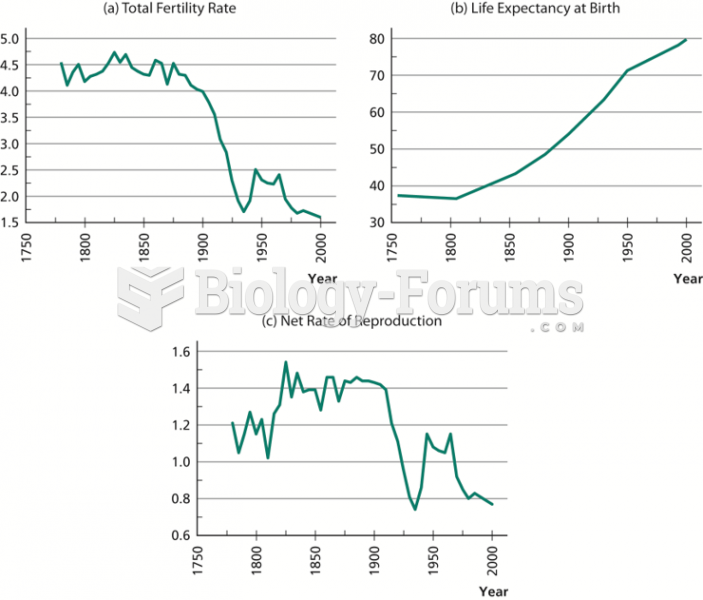|
|
|
Approximately 500,000 babies are born each year in the United States to teenage mothers.
Hippocrates noted that blood separates into four differently colored liquids when removed from the body and examined: a pure red liquid mixed with white liquid material with a yellow-colored froth at the top and a black substance that settles underneath; he named these the four humors (for blood, phlegm, yellow bile, and black bile).
Bacteria have flourished on the earth for over three billion years. They were the first life forms on the planet.
There are approximately 3 million unintended pregnancies in the United States each year.
According to the FDA, adverse drug events harmed or killed approximately 1,200,000 people in the United States in the year 2015.







